The Best Over-the-Counter Ingredients to Fight Dark Spots, According to Your Dermatologist
Plus, the safest brightening options for your skin tone.
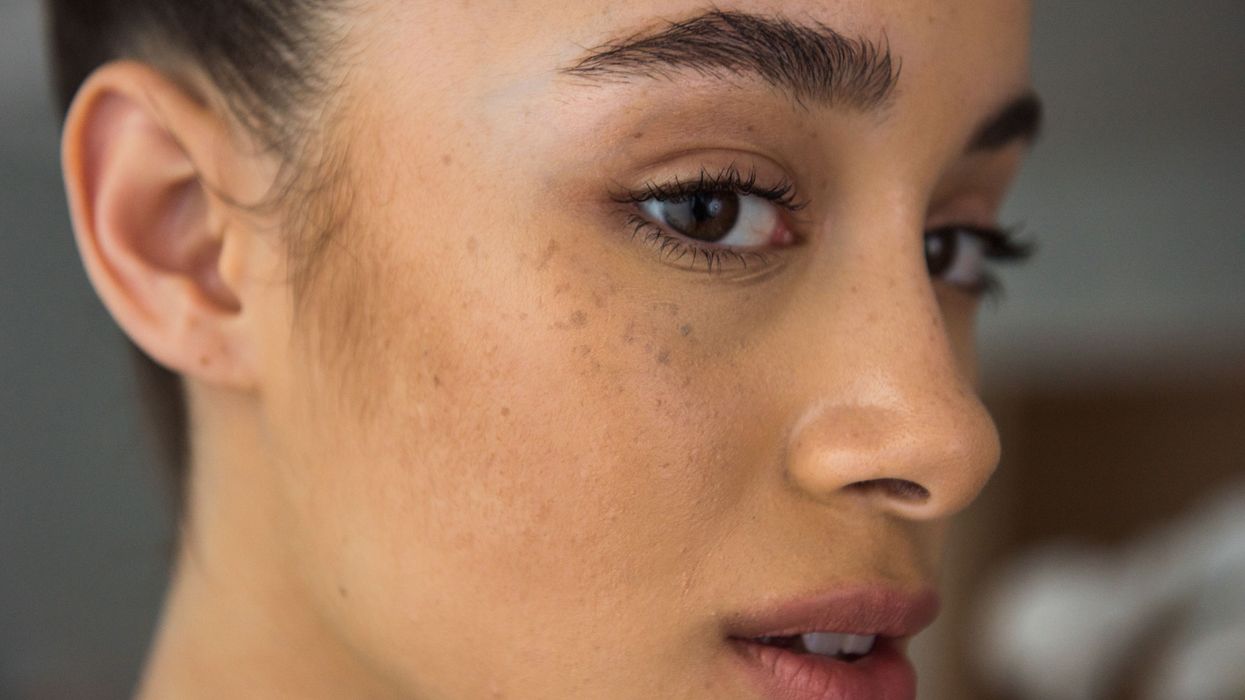
But don’t let that dissuade you from trying. Depending on the severity of your case (and the general health and condition of your skin), you might be able to see results with over-the-counter products. Just remember—patience is everything when it comes to healing your skin, so don’t expect to see the results you want overnight.
Common Causes of Hyperpigmentation
According to board-certified dermatologist Dr. Michelle Henry, there are numerous factors that can cause your melanin levels to rise, such as excessive “sun exposure (which causes age or liver spots, or solar lentigines), hormonal changes, skin inflammation from acne, eczema, or psoriasis, melasma (aka chloasma or the ‘mask of pregnancy’), and aging.” She also reveals that women with darker skin tones are more susceptible to dark spots given the higher natural levels of melanin. “When external factors like sunlight or hormones add up, melanin production dramatically increases, leading to hyperpigmentation.”
Board-certified dermatologist Dr. Dendy Engelman also stresses that certain habits, like picking, touching, or tweezing, can make someone predisposed to scarring. These types of scars or dark spots are caused by “post-inflammatory hyperpigmentation, such as acne scarring, chemical burns, cuts, or other tears in the dermis.”
Preventative Care
First and foremost, for anyone dealing with hyperpigmentation, you need to prioritize sun protection. Both dermatologists stress that using daily SPF and avoiding the sun during peak hours (generally 11:00 AM to 4:00 PM) is your best line of defense against dark marks. Of course, if you’re dealing with pregnancy-related melasma, there’s little that sun protection will do to prevent it, but it’s still wise to incorporate some SPF 30 into your beauty routine, reapply it often, and wear protective clothing when you are in the sun to keep hyperpigmentation at bay.
Over-the-Counter versus In-Office Treatments
Obviously, visiting a dermatologist means you’ll have access to stronger topicals and various other in-office procedures to treat your dark marks. These can range from chemical peels, laser resurfacing, and intense pulse light (IPL), to microdermabrasion and cryosurgery (or freezing). Your doctor will be able to determine the best course of treatment for you; however, there are several options you can explore from the comfort of your own home and potentially at a lower price point. Both Dr. Henry and Dr. Engelman suggest looking for products that contain ingredients like vitamin C, retinols, alpha hydroxy acids (such as lactic acid, glycolic acid, and malic acid), vitamin E, niacin, hydroquinone, and kojic acid.
Says Dr. Engelman of your options, “You can use AHA peels or retinol to help promote cellular turnover and to remove the top layers of the skin, thus fading the spot. Or [you can] fade with brightening ingredients like hydroquinone, kojic acid, phytic acid, and l-ascorbic acid [vitamin C]. If the pigment is deeper, I usually rely on lasers and light-based devices like IPL to treat.”
Again, patience is key here, especially when you’re using over-the-counter products (which contain a lower percentage of active ingredients than prescription options). It might take anywhere from six to 12 weeks to start to see results, which is why using your preferred formula as often as possible is crucial—you don’t want to prolong your skin-care journey any more than you have to.
Hyperpigmentation in Darker Skin Tones
Hyperpigmentation does not affect all skin tones in the same way, which is why treatment options for lighter tones are not always appropriate for darker complexions. Says Dr. Henry, “Although a wide variety of chemical peels are available to help fade dark spots, the choice becomes relatively limited when treating women of color. Not only is their skin very sensitive to deep chemical peels, but even medium-depth peels need to be used with extra caution. Failure to do so will otherwise worsen the very problem you’re trying to correct—i.e., cause more hyperpigmentation.”
She recommends mandelic acid peels as opposed to glycolic acid peels for darker skin tones, as they allow you to reap all the benefits of the AHAs without risking undue irritation or post-inflammatory hyperpigmentation.
And if you are experiencing more severe dark spots and scarring (or are not seeing results after 12 weeks of trying an OTC product), she cautions against visiting an aesthetician’s office for a laser treatment. Any dermatologist will know that the lasers, which target and break down the dark spots containing extra melanin, cannot differentiate between the unwanted pigmentation and the surrounding skin. It’s best to speak with a trusted treatment provider to explore other options and ensure you’re not further damaging your skin with a laser.
Hyperpigmentation and Aging
Liver spots and dark marks are synonymous with aging, which is why preventative measures are so crucial to adopt when you’re younger. Dr. Henry explains that although the number of active melanocytes (the cells that make melanin) decrease by about 10 to 20 percent per decade, the areas of your skin that are often sun-exposed contain more active melanocytes than non-exposed skin. “The resultant increased melanin production in sun-damaged skin can increase the likelihood of developing hyperpigmentation as you age, which is why we use the two terms ‘sun spots’ and ‘age spots’ synonymously.”
Dr. Engelman explains that this actinic damage (due to chronic UV exposure) also builds up over time and can increase the likelihood of experiencing these dark spots when you’re older. She also stresses the importance of adequate moisture to keep your skin tone even throughout your life. “Don’t underestimate moisturizer. The more pliable your skin is, the less likely it will be to tear and make scarring worse.” In essence, use more moisturizer and sunscreen, and wear them every single day to help your skin look its best throughout your life.
Shop a Few of Their Favorite OTC Brightening Products:
Glo Skin Beauty Pro 5 Liquid Exfoliant
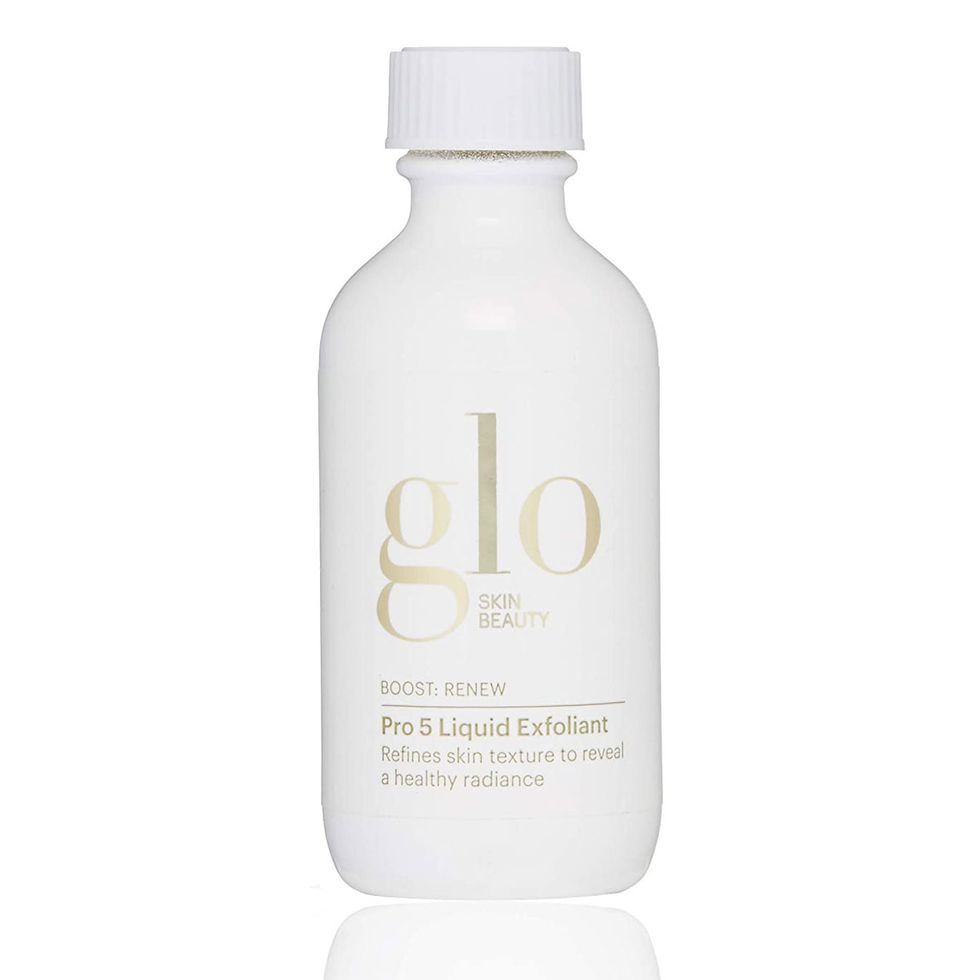
“This is a new peel that combines AHAs and PHAs for an effective, yet gentle exfoliation. It combines mandelic acid, lactic acid, gluconic acid, malic acid, and tartaric acid to be safe for all Fitzpatrick skin types [pale white to dark brown] without risk of hypo- or hyperpigmentation. The skin will look brighter after one use.”
Differin Dark Spot Correcting Serum
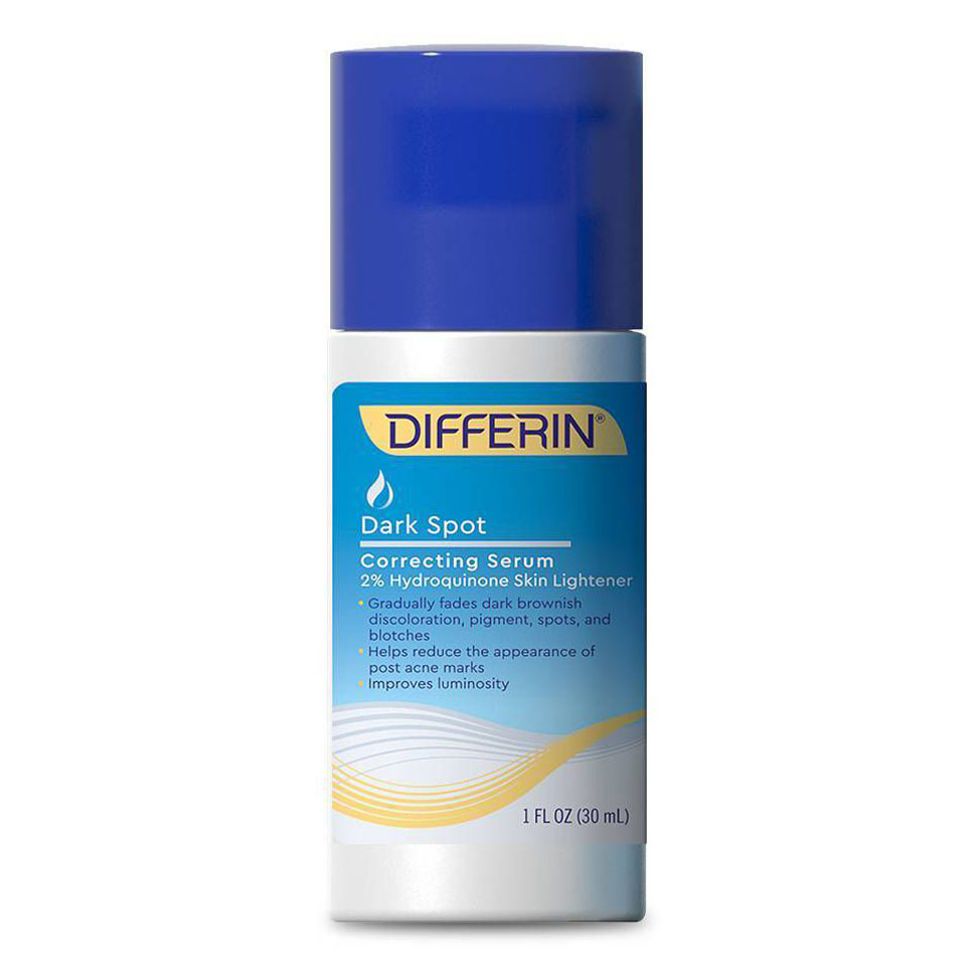
“This addresses both acne and acne-induced hyperpigmentation. It contains two percent hydroquinone, an FDA-approved ‘skin bleaching’ agent that works by interfering with melanin production. Hydroquinone is available in higher percentages via prescription from your dermatologist.”
SkinCeuticals Discoloration Defense

“This is clinically proven to improve brown patches, skin discoloration, and acne marks.”
Skinfix Correct+ Dark Spot Corrector
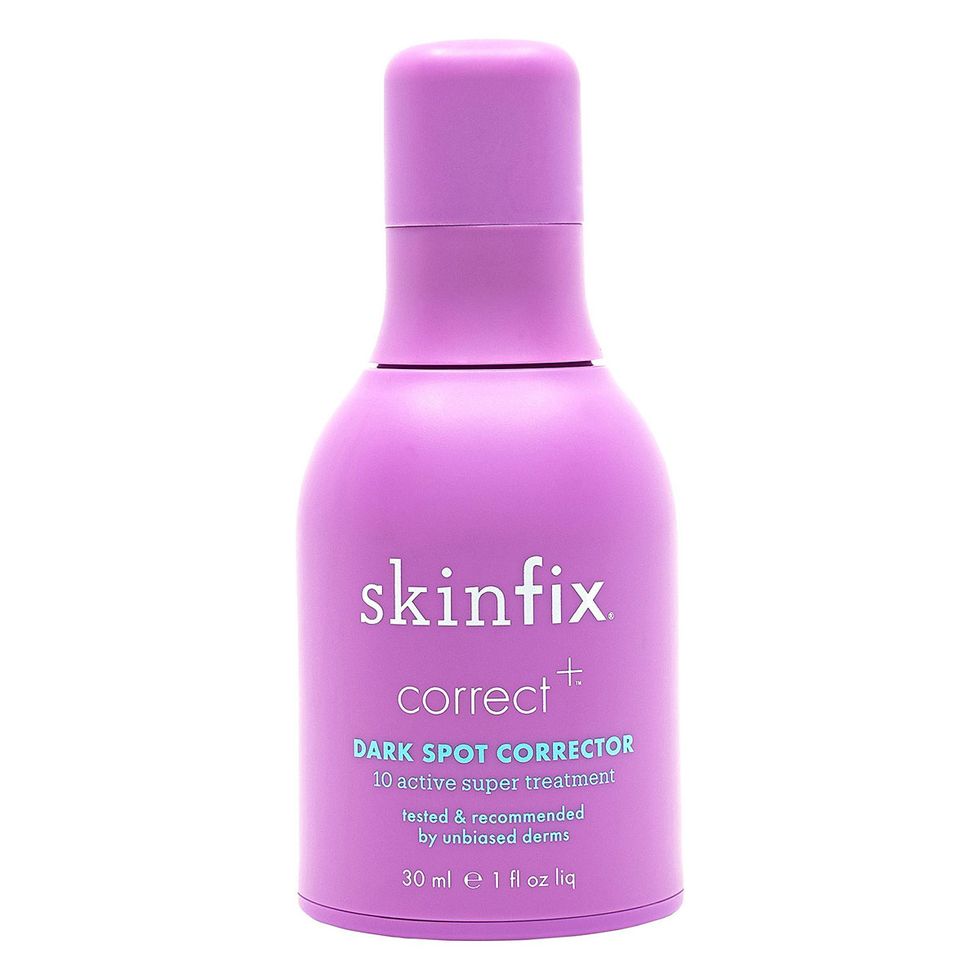
“This uses AHAs, vitamin C, and lipids to correct, brighten, and support the skin barrier.”
The Ordinary Mandelic Acid 10% + HA
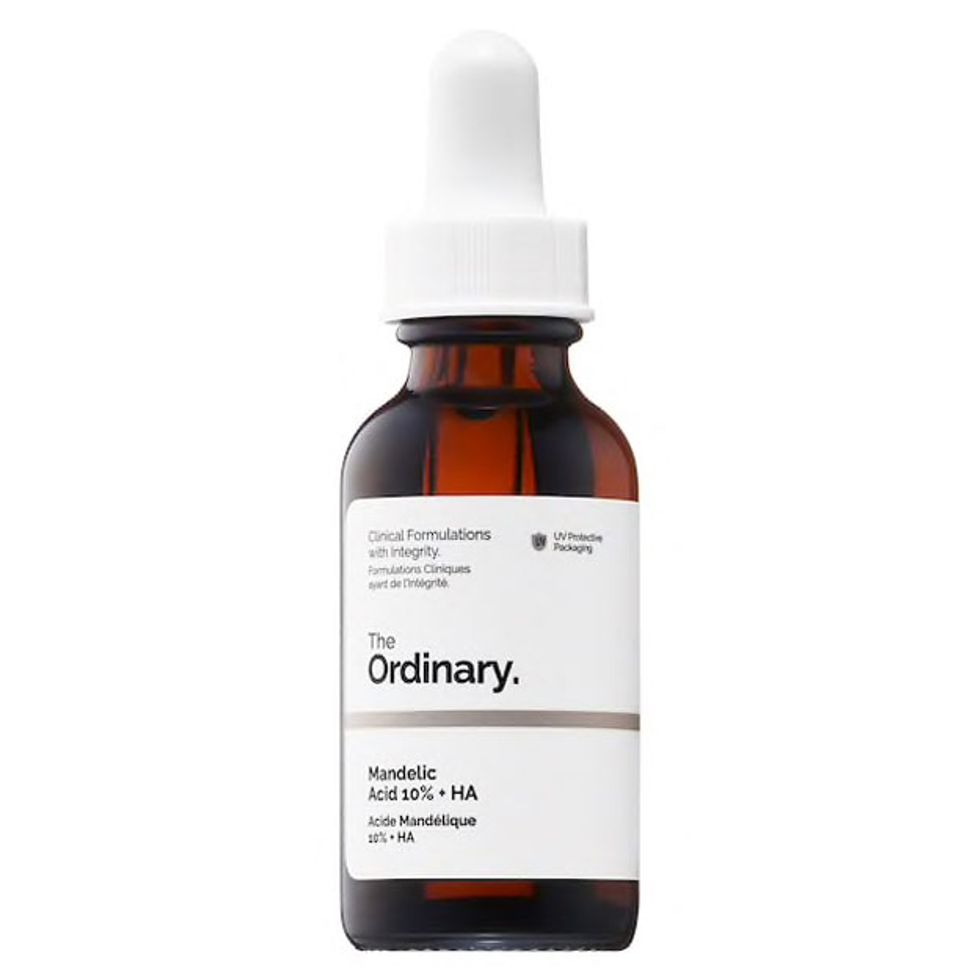
An effective and affordable option that is ideal for darker skin tones is this 10 percent mandelic acid serum that provides the skin with a gentle exfoliation without causing undue irritation. It’s one of the gentlest AHAs you’ll find over the counter, so if you have super sensitive skin, this is also a terrific product to try.
The 47 Best Beauty Products That Launched in August
Fine Lines and Wrinkles Are No Match for These Retinol Eye Creams
Here’s What Happens When You Start Your Day with a Cold Shower Shock




